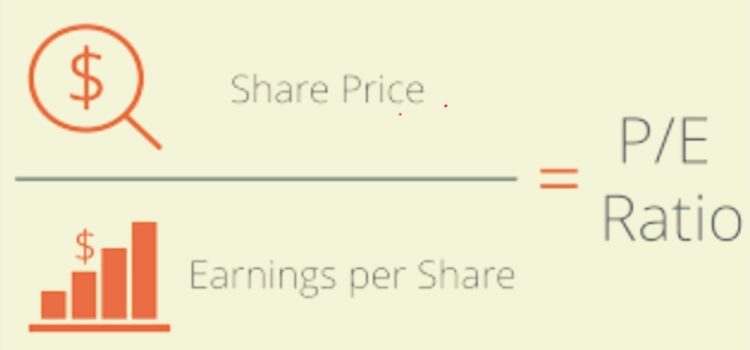What is P/E Ratio | How to analyse P/E Ratio | Price to Earning Ratio
P/E Ratio or Price to Earning Ratio is one of the most important valuation ratios. It is the ratio of the Company’s share price to the company’s earnings per share.
P/E Ratio tells us that if you invest in a company, then how much time it would take for you to recover that amount from the company assuming that the company distributes its entire profit amongst its shareholders and shows the same performance in the coming years.
For example, you invest Rs. 1 Lakhs in a company XYZ Ltd. Whose P/E ratio is 5, which means that you’ll be able to recover your investment of Rs. 1 lakh in next 5 years.
The formula to calculate Price to Earning Ratio is:
P/E Ratio = Share Price / EPS
EPS denotes Earning per Share which means amount earned by shareholders on each share.
EPS = Earnings/ No. of Outstanding Shares
Low Price-Earning Ratio
If P/E Ratio is low then it means that either the stock is undervalued or the investors doesn’t have trust on the company’s future performance.
Usually people believe that if the P/E Ratio of any company is low then it is only because its share price is undervalued. But it is not true.
There could be another reason as well. One such reason could be that the stock is not performing well in the market or the investors are not finding its future prospects to be strong.
There are some cases where people buy shares only because its P/E Ratio is less.
But the fact is that there could be some companies whose P/E ratio is less only because of the fact that they are on the verge of getting insolvent.
So, to fully understand the P/E Ratio you must also find the reason behind its fluctuation.
High Price-Earning Ratio
If the P/E ratio of any stock is higher then it shows that the stock is either overvalued or the investors believe that the future performance of the company will be very good.
The best way to check whether the P/E ratio is high or low is to compare the P/E ratio of the company with other companies which fall under the same industry.
Or you can simply compare the company’s P/E with the industry P/E Ratio.
Industry P/E means the P/E Ratio of that whole industry. For example, the P/E Ratio of IT industry would be the average of all the IT companies.
Only checking the P/E ratio before purchasing the shares of a company is not enough. One should also evaluate that P/E Ratio properly.
You should also check that whether the recent profit earned by the company is temporary or it will show the similar results in the coming years.
Though P/E ratio is one of the most important valuation ratios but you should also keep a track of EV/EBITDA, Price Earning Growth and Price Cash Flow Ratio.












